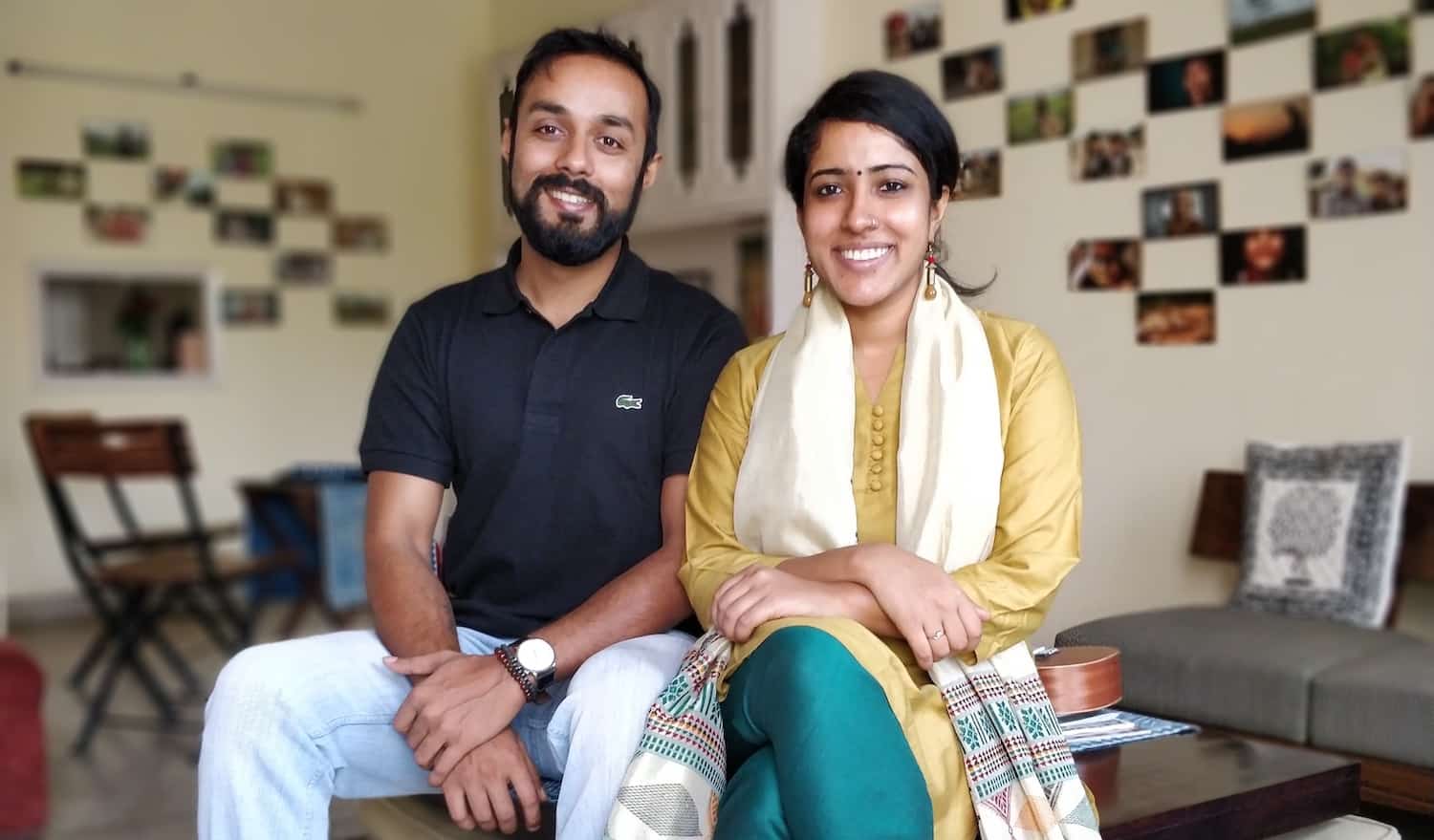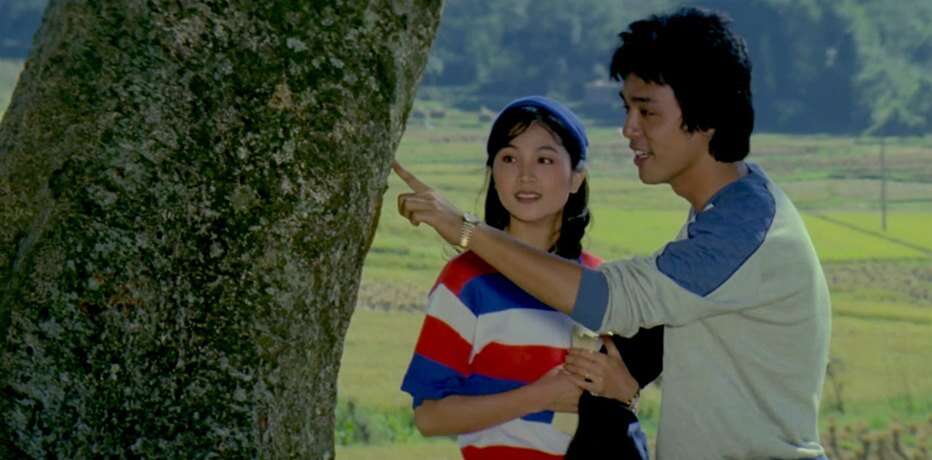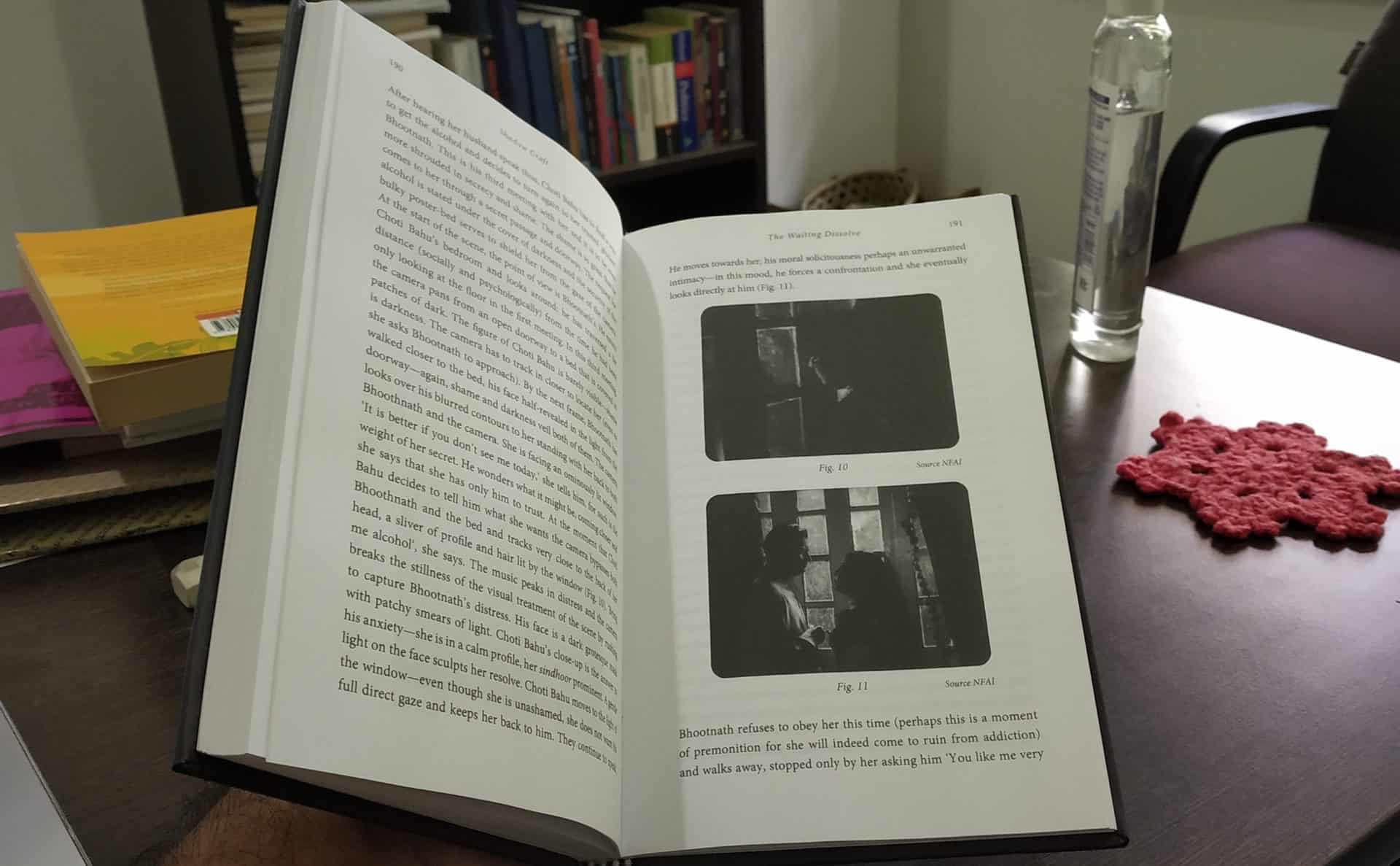The Characters
- Director Kim Ki-yeol
Kim Ki-yeol, once acclaimed by critics for his first film, is now a director whose productions are simple commercial melodramas. He suddenly becomes convinced that he can create a genuine cinematic masterpiece by merely reshooting the ending of his latest feature. However, his path is strewn with obstacles, facing incomprehensible producers, egoistic actors, and zealous censors.
The character of Kim Ki-yeol draws its origins from Kim Ki-young, one of the prominent figures of classic Korean cinema. Originally trained as an otorhinolaryngologist, Kim Ki-young was a key figure in the 1950s revival. He always operated on the fringes of the studio system, creating more personal films, including “The Housemaid” (1960), which is now considered one of the greatest Korean films of all time. His works are known for their extravagance, a trait that the “film within the film” sequences in “Cobweb“ pay tribute to by incorporating their key characteristics, settings, and lighting.
Increasingly marginalized within the state-controlled Korean film industry of the 1970s, Kim Ki-young faded into obscurity after a series of unremarkable anticommunist films. However, the re-release of several of his classics on video in the 1980s elevated him to the status of a cult icon for future directors of the “386 generation,” such as Kim Jee-woon. Revealed to the world in the 1990s through retrospectives of his films at major international festivals and the remastering of his masterpiece “The Housemaid” by Martin Scorsese's World Cinema Foundation, he tragically perished prematurely with his wife in a house fire in 1998.
- The “mentor” Shin Sang-ho
While he may appear as a mere secondary character, Shin Sang-ho turns out to be an equally annoying and utterly indispensable ghost to the plot. Kim Ki-yeol started as his assistant. The face-off between the two men becomes an essential element in Kim Ki-yeol's redemption.
The character of Shin Sang-ho is inspired by another significant figure in Korean cinema history, Shin Sang-ok. The latter, along with Kim Ki-young, was a leading figure in the revival of Korean cinema in the late 1950s. He was also the founder of Shin Films, the first major Korean film empire, which controlled over half of the industry's infrastructure in the 1960s and employed more than 250 people, three times more than its main competitor. Shin Sang-ok directed and produced several Korean cinema classics such as “The Houseguest” and “My Mother” (1961) and “Bound by Chastity Rule” (1962); he was also responsible for popularizing family films in the 1960s and kimchi westerns and martial arts films in the 1970s.
In Korea, he inspired both admiration and aversion from his peers, who felt they were living “in the shadow” of his talent and his domination of the film industry – much like the case of director Kim Ki-yeol in “Cobweb”
Shin Sang-ok is internationally known for having been abducted, shortly after his ex-wife and superstar actress Choi Eun-hee, by North Korean secret services in 1978 to assist President Kim Jong-il in elevating his country's cinema to an international level. Shin Sang-ok managed to escape in 1986 and found refuge in the United States, where he created (and directed an episode of) the Disney franchise “Three Ninjas” (aka Ninja Kids) under the pseudonym Simon Sheen.
The Producers
- Madam Shin
Madam “The President” Shin reigns as a true tyrant over her directors, whom she views at best as mere implementers. She places no importance on artistic aspirations but is primarily concerned with the immediate profit of her projects to ensure the viability of her massive film empire, Shinseong Films. She is extremely cautious not to offend the authorities, as in the Korea of the 1970s, even the slightest “misstep” on her part would have led to the impossibility of continuing her profession.
The character of Madam Shin is also modeled after Shin Sang-ok – but the producer Shin Sang-ok. Known for his reprehensible behavior towards his employees, assistants, and directors, Shin Sang-ok's primary concern was to preserve the longevity of his immense film empire, Shin Films. He even lost his producer's license, prematurely ending his career, when he was caught by the regime for intentionally including two seconds of a previously censored shot of a naked actress in the trailer of his film “Rose and Wild Dog” (1975). Burdened by debts, he contemplated exile – before being abducted by North Korean secret services.
The choice of a female character to embody this role is not incidental on the part of Kim Jee-woon and his screenwriter Shin Yeon-shick. In fact, there were very few female directors in the history of Korean cinema (only five between 1919 and the 1990s), but production roles were commonly held by women in the 1960s and 1970s – even in a predominantly male environment and a fundamentally patriarchal society. The character of Madam Shin is also inspired by Hwang Hye-mi, one of the most influential producers of the time, responsible for masterpieces like “The Mist” (Kim Soo-yong, 1967) and “Potato “(Kim Seung-ok, 1968). Unfortunately, her own endeavors as a director ended in failure, marking the premature conclusion of her career.
- Shin Mido
In contrast to her aunt, Madam Shin, the lively Shin Mido manages the accounting for Shinseong Films studios. She is among the few individuals who truly believe in the director Kim Ki-yeol. She is determined to do everything (absolutely everything) possible to successfully complete the project, going so far as to ply the government officials inspecting the shoot with alcohol and even embarrassing herself by attempting (poorly) to act.
The character of Shin Mido isn't modeled after a specific person but rather embodies the spirit of different eras in Korea. The latter half of the 1960s marked a generational shift, as the youth no longer identified with the traditional Confucian values instilled by their elders. The younger generation also feared the uncertain future under the military regime of General Park Chung-hee.
Shin Mido's character, through her hairstyle and clothing, recalls the students involved in the future minjung movement, a South Korean social movement of the late 1970s and 1980s that aimed to criticize the military regime and promote democracy – notably through a series of independent film productions made on the fringes of the mainstream industry.
Shin Mido's character also signifies the emergence of a new generation of female producers in the South Korean film industry during the latter half of the 1990s, playing a pivotal role in its revitalization. These producers paved the way for female directors, paying special attention to female characters and urging the industry to reinvent film genres to appeal to a wider audience. In fact, Kim Jee-woon's early career was made possible thanks to the valuable support of young female producers of that time.
Ironically, as revolutionary as Shin Mido might be, she is also a product of Korea's tumultuous past: being of Korean-Japanese descent, she can curse in Japanese, which is a supreme insult to Koreans still affected by the painful period of Japanese occupation. This element is another very personal touch from Kim Jee-woon and his screenwriter, reminding us that Korean cinema also developed under Japanese influence, a topic that remains extremely taboo in Korea.
The Actors
- Kang Ho-se
Kang Ho-se owes his fame to his role in Kim Ki-yeol's first successful feature film, but he hasn't been able to sustain his popularity and is now seen as “old-fashioned” by the audience. Married to a star of the “film within the film,” he is secretly involved in an affair with another actress from the production, Han Yu-rim, which will cause him significant trouble.
The character of Kang Ho-se is modeled after the leading actor of the 1960s and 1970s, Shin Seong-il, particularly in terms of their similar hairstyles; but unlike his illustrious model, who appeared in over 500 films during a 40-year career, Kang Ho-se is a caricature of that: his exaggerated and theatrical acting style recalls more the melodramas of the silent era than the cinema of his time. His adulterous affair harks back to the affairs of many Korean stars during the golden age of Korean cinema, which regularly made headlines to divert attention from the real issues of society.
- Miss Oh
Ms. Oh is a recurring actress in Kim Ki-yeol's films – not out of friendship, but – as she herself puts it – “solely for the paycheck.”
While young actresses often portrayed sacrificial characters or victims of patriarchal norms in Korean cinema of the 1960s and 1970s, older actresses were often relegated to the role of the “wicked stepmother,” symbolizing a source of conflict and evil.
- Han Yu-rim
Han Yu-rim portrays the new rising star of Korean cinema. She represents the many aspiring actresses of the 1960s, who were often chosen solely for their looks. Few of them enjoyed lengthy careers.
The character of Han Yu-rim also expresses concerns multiple times about whether she can make it to the set of her “TV serial” on time. In the context of the 1960s modernization plan for the country, the Park regime encouraged the population to buy televisions to support national economic development and, unofficially, to facilitate better dissemination of government propaganda. As a result, the percentage of households equipped with a television rose from less than 1% in 1966 to over 50% in 1977. These changes led to a massive exodus of directors, actors, and actresses to the small screen.
The rise of actresses in television in the early 1970s was also facilitated by the decline, in cinema, of melodramas, comedies, and youth films with strong female characters, in favor of Korean westerns and martial arts films.
The Censors
The most ridiculed and mocked characters in “Cobweb” are undoubtedly “the censors.” They appear suddenly on the set to forbid clandestine filming, only to be bribed with alcohol. The head censor, Mr. Choi, even seems inclined to overlook transgressions if the team incorporates anticommunist elements into the plot, even at the expense of narrative coherence.
Upon his ascension to the presidency, Park Chung-hee implemented a film law in 1962 that required, among other things, the submission of all filming projects for monitoring purposes, as well as script revisions and approvals for the completed films. One of the strategies to “circumvent” censorship was to integrate vaguely patriotic, pro-government, and/or anticommunist themes into the plot.
It was not uncommon at the time for government officials to burst onto film sets, ostensibly to oversee the smooth progress of production, but in reality to enjoy minor privileges and have the opportunity to get close to the stars of the era.
It is important to note that although censorship was “officially” abolished in Korea in 2001 in favor of an age-based classification system like the one in France or other countries around the world, Kim Jee-woon is among the few directors who have experienced cuts to his film “I Saw the Devil “(2010) due to “excessive violence” and “scenes of cannibalism.” His film was eventually released in Korea in a cut version and was restricted to audiences aged 18 and above.

Fun Facts
- Stand-In
The practice of substituting an actor on the spot for insert shots was a common occurrence in Korean cinema of the 1960s and 1970s due to the busy schedules of the main stars. One of the most famous examples is the replacement, without any explanation, of Hang Song-shick by actor Im Woon-hak in the second part of “Captain of Bandits” (Lee Gyeong-son, 1926); the former had suddenly vanished from the set to leave the country and live in Japan.
- Half-Sister
The revelation (no real spoiler) in the “film within the film” that the fiancée character is actually the hero's half-sister is one of the most hackneyed (and mocked) clichés in Korean cinema since the early shinpa melodramas of the 1920s made under Japanese influence. Typically, these films ended with the suicide of the main characters.
- Long Sequence shot
The recurring gag about the concept of the “sequence shot” pokes fun at the rudimentary filmmaking of Korean films produced at a breakneck pace in the 1960s and 1970s, which generally avoided any camera movement. Kim Ki-young was one of the first to seriously reconsider mise-en-scène.
Like the “film within the film” in “Cobweb”, most feature films were shot on 16mm until the early 1980s due to economic reasons related to film and sound recording costs. Color only became prevalent starting from 1969.
On several occasions, the imperative of having to surrender the studio and the camera for the shooting of “Aimless Bullet” (Yu Hyun-mok) is mentioned. This is a deliberately anachronistic detail, as the film was actually made in 1961, well before the 1970s period depicted in “Cobweb”. However, “Aimless Bullet” was made immediately after Kim Ki-young's “The Housemaid”, to which “Cobweb” pays homage through its sets and the character of Kim Ki-yeol.
There is a mention that Kim Ki-yeol's assistant plans to join director Lee Man-hee once the reshooting is completed. Lee Man-hee was another prominent figure in Korean cinema of the 1960s, juggling commercial productions and more personal projects. He was often seen as a rival to Kim Ki-young, from whom the character of director Kim Ki-yeol draws inspiration.













